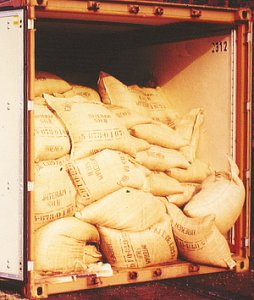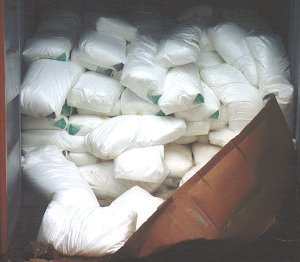 |
Import container with coffee bags |
An example of a chaotic "stowage pattern". The stow was not anchored.
 |
Jumbled plastic bags |
In neither of the cases shown had the cargo yet suffered any damage, but the high additional costs of additional manual labor must be borne in mind.
In the light of these two pictures, it is worth taking a look at the CTU packing guidelines, which state in point 5, which provides advice on receipt of CTUs:
- 5.1 When receiving a CTU, the receiver should ascertain that the unit is externally in good condition and without damage. If there is any damage, the receiver should document and notify it as appropriate. Specific attention should be paid to damage that may have influenced the condition of the cargo within the unit. If the receiver detects any damage during the discharge of the unit, this should be documented and notified as appropriate. If a package containing dangerous cargoes is found to be so damaged that the contents leak out, the immediate area should be evacuated until the hazard potential can be assessed.
- 5.2 Persons opening a CTU should be aware of the risk of cargo falling out. Doors, when opened, should be secured in the fully opened position.